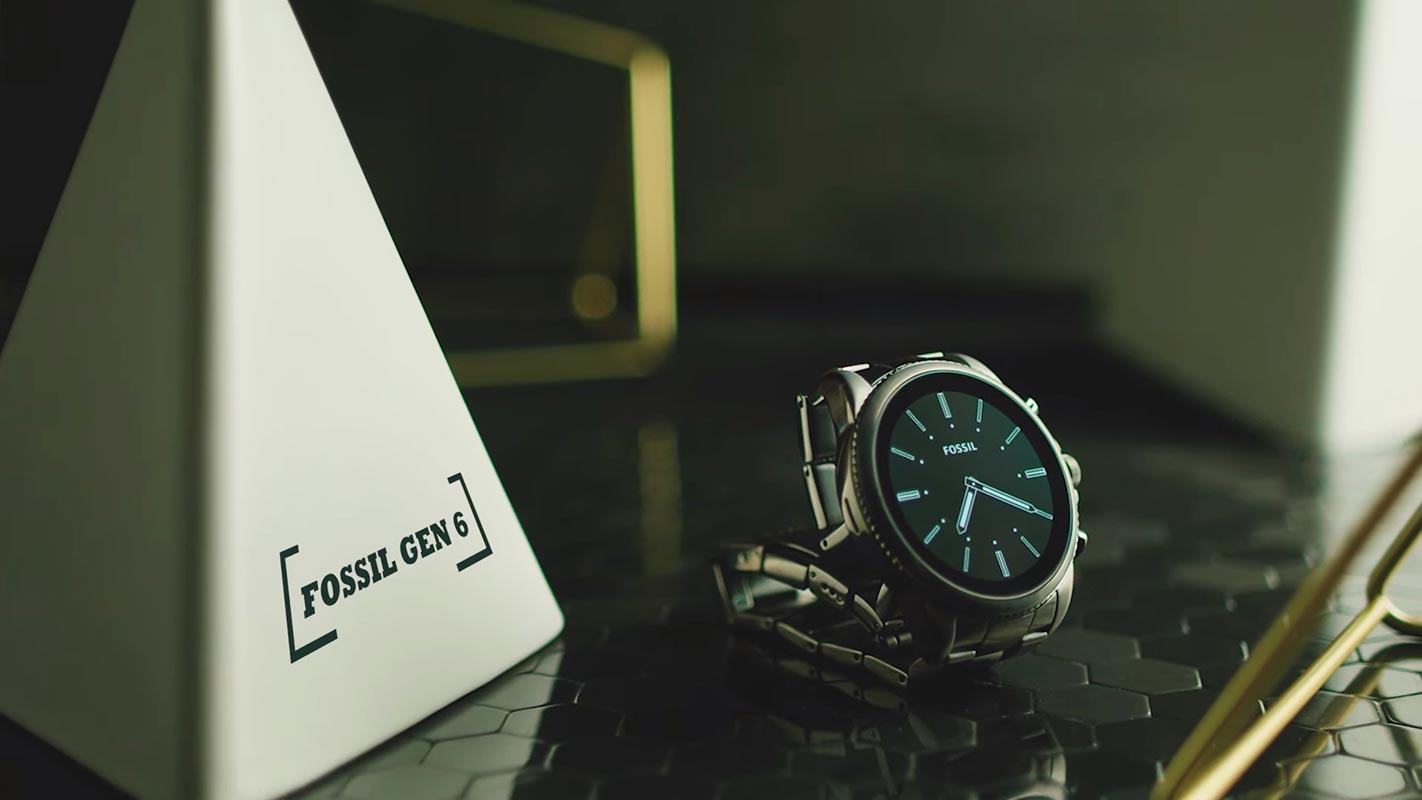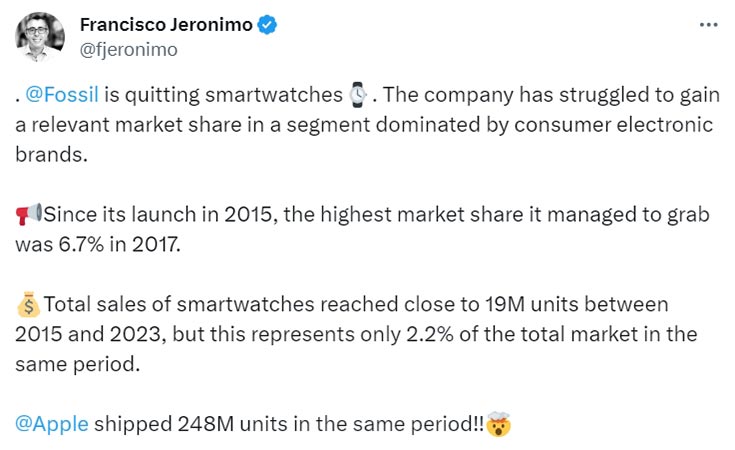Fossil, a prominent figure in the smartwatch industry, has recently declared its exit from smartwatch production, marking a significant shift in the Wear OS landscape. This article delves into the rationale behind Fossil’s departure, navigating through the challenges posed by a market overwhelmingly influenced by tech behemoths like Apple. We scrutinize the trajectory from Fossil’s early influence to its eventual withdrawal, scrutinizing sales data, technological hurdles, and the wider repercussions for Wear OS. Fossil’s decision underscores the evolving dynamics of the smartwatch market and prompts an exploration of the industry’s future without one of its key players. As we bid farewell to Fossil’s smartwatches, the article reflects on the broader implications and the potential for innovations in the evolving smartwatch ecosystem.
Fossil Quit Making Smartwatches
Fossil’s recent revelation about discontinuing smartwatch production has sparked curiosity in the dynamic landscape of smartwatches. The company, once a prominent figure in the Wear OS ecosystem, cited strategic reasons for this significant move. As we navigate through the evolution of the smartwatch industry and Fossil’s role in it, we aim to unravel the complexities leading to this decision.

Evolution of Smartwatch Landscape
The smartwatch landscape has undergone remarkable transformations since Fossil’s foray into the market in 2015. Back then, Fossil launched its first generation of Wear OS watches with the Fossil Q Founder, entering a space shared by brands like Motorola, LG, Asus, and Huawei. However, as time progressed, the market dynamics shifted significantly. With its millions in sales, the rise of the Apple Watch changed the game for smartwatches, leaving competitors needing help to keep up.
Fossil’s Initial Impact
Fossil was initially the only significant player in Android smartwatches, boasting various designs under brands like Skagen, Michael Kors, and Kate Spade. While Mobvoi’s TicWatch brand provided suitable hardware at affordable prices, Fossil’s recognized and trustworthy name, coupled with its extensive product range, kept it ahead for a while.
Competitive Challenges
Despite being the prominent name in Android smartwatches, Fossil faced challenges maintaining its position. The market witnessed other brands dropping off, leaving Fossil as the sole “big” name. However, this didn’t translate into a substantial impact, especially compared to the Apple Watch’s overwhelming success.
Quantity vs. Market Share
Fossil Group, encompassing various brands, produced many smartwatches, including Skagen, Michael Kors, and Kate Spade. However, despite this quantity, Fossil’s market share remained modest. According to Francisco Jeronimo of the IDC, Fossil sold approximately 19 million smartwatches between 2015 and 2023, capturing only 2.2% of the market. In contrast, Apple sold a staggering 248 million units.
Sales Figures and Market Share
The data provided by Jeronimo reveals that Fossil’s peak was in 2017, when it captured 6.7% of the market. However, this success was short-lived, and Fossil struggled to maintain its position, eventually leading to the recent decision to exit the smartwatch market.
Factors Contributing to Struggle
Why did Fossil struggle? There’s no singular reason but a combination of factors. The brands under Fossil Group have a strong association with traditional watches, which might have impacted the adoption of their smartwatches. Moreover, Google’s Wear OS, the platform Fossil relied on, should have been addressed over the years, affecting the functionality of Fossil’s smartwatch releases.
Technological Limitations
Another factor that played a crucial role in Fossil’s struggle was the choice of hardware. Fossil used Qualcomm’s smartwatch-focused Snapdragon chips, which, until recently, were underpowered. This often resulted in Fossil watches feeling slower and more laggy compared to alternatives from other brands utilizing more advanced chips.
Comparison with Competitors
The performance issues with Fossil’s smartwatches put them at a disadvantage compared to competitors. While Mobvoi’s TicWatch and other Wear OS options were gaining popularity, Fossil’s watches faced criticism for their sluggishness, impacting the overall user experience.
Fossil’s Role in Wear OS Survival
Despite its challenges, Fossil played a pivotal role in the survival of Wear OS. As one of the few consistent contributors to the platform, Fossil helped keep Wear OS relevant, even though its market share was relatively small compared to Apple.
Impact on Fossil Group’s Brands
Fossil Group’s exit from the smartwatch market has broader implications for its various brands. Skagen, Michael Kors, Kate Spade, and others under the Fossil Group umbrella might see a shift in focus, potentially impacting their diverse portfolio of smartwatches.
Understanding Fossil’s Decision
In understanding Fossil’s decision to discontinue smartwatch production, it’s crucial to acknowledge the significant changes in the smartwatch landscape. The company’s strategic move reflects an adaptation to the evolving market dynamics, and while it marks the end of an era, it also opens doors for innovations and players.
FAQs
What prompted Fossil to stop making smartwatches?
Fossil cited strategic reasons, pointing to significant changes in the smartwatch landscape.
How did Fossil’s smartwatch sales compare to Apple’s?
According to Francisco Jeronimo, Fossil’s sales were modest, capturing only 2.2% of the market, starkly contrasting Apple’s 248 million units sold.
Were technological limitations a significant factor in Fossil’s struggle?
Yes, Fossil’s underpowered Qualcomm Snapdragon chips contributed to performance issues, affecting the overall user experience.
What role did Fossil play in the survival of Wear OS?
Fossil was a pivotal contributor to Wear OS’s existence, even though its market share was relatively small compared to competitors like Apple.
How will Fossil’s exit impact its various brands under the Fossil Group?
The departure signals a shift for brands like Skagen, Michael Kors, and Kate Spade, potentially impacting the smartwatch offerings of Fossil Group’s diverse portfolio.
Wrap Up
Fossil’s recent departure from the smartwatch market marks a significant milestone in the Wear OS era, signifying a shift in the industry’s landscape. The challenges Fossil encountered, spanning from technological constraints to the overwhelming influence of competitors, have fundamentally altered the dynamics of the smartwatch sector. Fossil, having played a pivotal role in sustaining Wear OS, leaves a void that prompts contemplation about the platform’s future trajectory.
As we bid farewell to Fossil’s smartwatches, the industry anticipates a period of innovation and the emergence of new players eager to fill the gap left by this departure. This transitional phase offers challenges and opportunities, pushing the smartwatch market towards fresh developments and competitive dynamics without a key player like Fossil.

Selva Ganesh is the Chief Editor of this Blog. He is a Computer Science Engineer, An experienced Android Developer, Professional Blogger with 8+ years in the field. He completed courses about Google News Initiative. He runs Android Infotech which offers Problem Solving Articles around the globe.



Leave a Reply